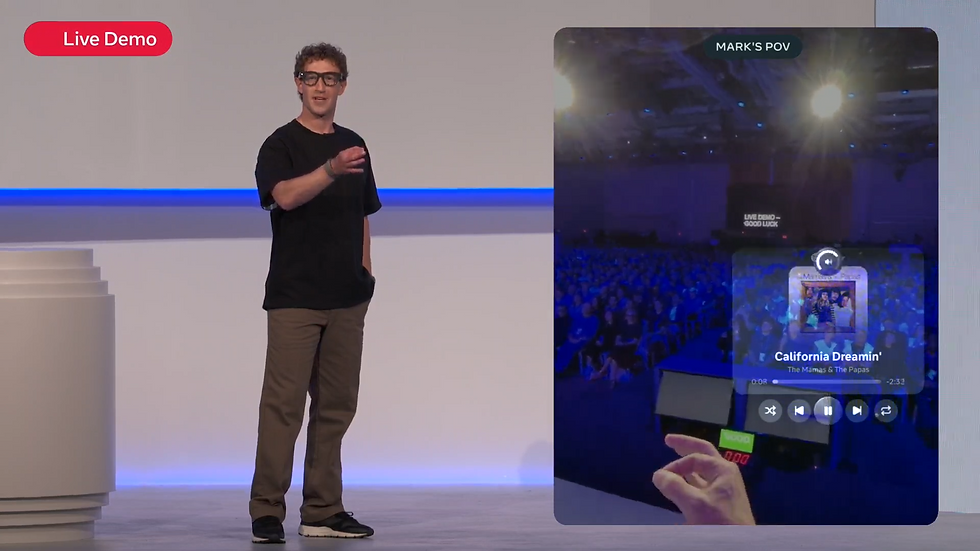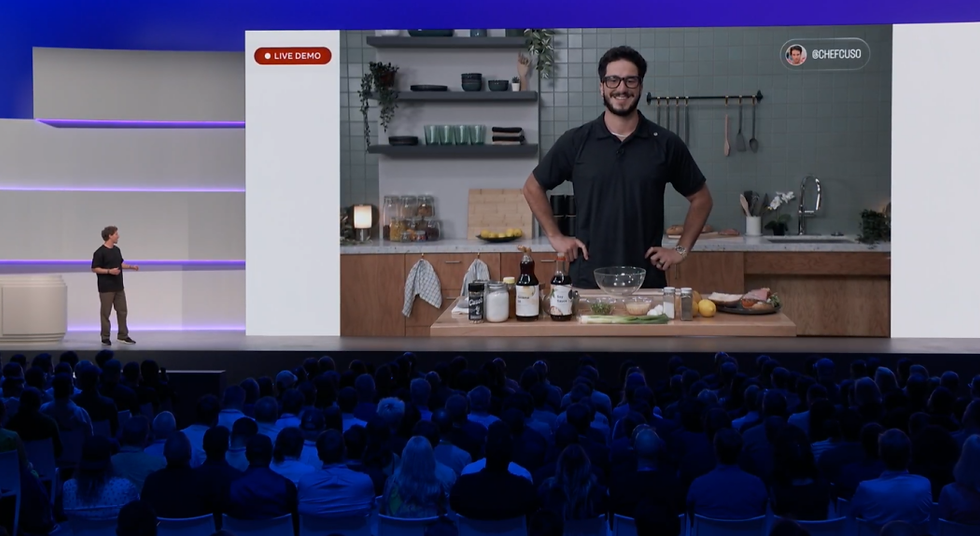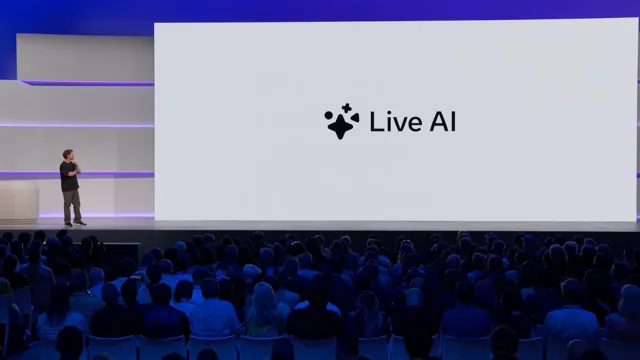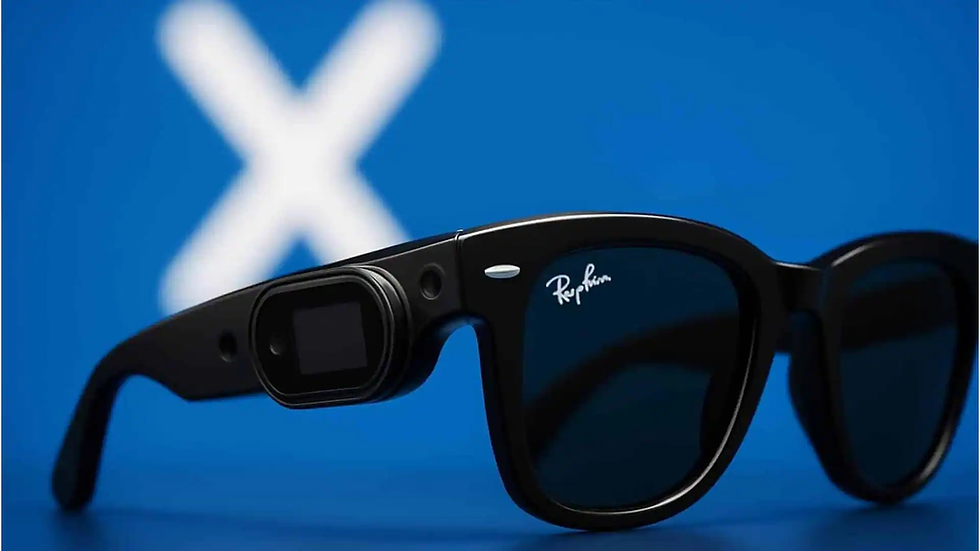Meta’s Live AI Demo Glitched Because “Hey Meta” Trigger Activated All Devices, CTO Explains
- Aisha Washington

- Sep 21
- 12 min read

Why the Meta smart glasses demo failure matters
At Meta Connect 2025 a highly anticipated live demonstration of Meta’s smart glasses faltered in a way that turned heads for all the wrong reasons. During keynote demos, a wake‑word workflow — the glasses’ “Hey Meta” activation — caused many devices to simultaneously stream video to Meta’s backend, which the company described as a “self‑inflicted DDoS” caused by a resource‑management mistake and a separate, rare video‑pipeline bug that has since been fixed. For an in‑person and online audience expecting seamless, real‑time augmented reality, the result was stalled feeds, corrupted overlays, and visible interruptions that left both spectators and developers asking why. Read the CTO’s explanation for the technical root cause in the TechCrunch breakdown of Meta’s postmortem. For a readable explainer see the TechRadar piece that quotes Meta saying “we DDoS’d ourselves” and notes the video bug is fixed, and for additional context read the Engadget summary of the CTO’s comments.
Feature breakdown and performance

What the “Hey Meta” live AI features were intended to do
Meta’s demo combined several modern components into a single live showcase. At the edge — on the glasses themselves — a wake‑word listener awaited the phrase “Hey Meta,” which is a wake‑word: a voice or event trigger that turns a device from passive to active. Once triggered, the glasses captured video locally and streamed it to a cloud or edge processing tier, where AI models ran computer‑vision, tracking, and overlay logic to produce augmented reality content that streamed back to the device in near real time. The intent was to present a unified, always‑ready experience: speak the wake‑word, the device captures and offloads minimal sensor data, the backend enriches the feed, and the glasses overlay contextual AR elements — all with latency low enough to feel natural.
This orchestration depends on tight coordination between device firmware, transport layers (the video pipeline), and a backend orchestration fabric that manages streams, allocates compute, and enforces rate limits. Meta’s demo was ambitious because it relied on many devices and many parallel streams, each of which had to be scheduled and processed for the overlays to remain synchronized.
How the system failed in technical terms
According to the CTO’s account, a workflow in which the wake‑word trigger was broadcast or propagated (for example, as part of a staged demo cue) caused a large number of devices to transition from idle to active almost simultaneously. That spike resulted in thousands of concurrent video streams being requested and allocated. In short, the orchestration layer exhausted available backend resources — a functional equivalent of a distributed denial‑of‑service condition, but self‑inflicted by the company’s own demo choreography rather than an external attacker. Meta described this as a resource‑management mistake that exposed a separate, rare video pipeline bug that further dropped or corrupted streams under load. Read more about the sequence in TechRadar’s account of the “self‑inflicted DDoS” and the fixed video bug.
The video pipeline bug appears to have been a concurrency‑sensitive defect: under normal conditions it did not surface, but once many streams competed for encoding/transport resources, either buffer handling or stream multiplexing logic mishandled frames and caused stalls or outright corruption. The CTO emphasized that this was not a wireless connectivity or hardware problem with the glasses themselves, a point reiterated in TechCrunch’s interview.
Immediate user‑facing symptoms and perception
For attendees the failure looked like frozen or blank feeds, overlays that jumped or misaligned, and brief disconnects that interrupted interactions. For remote viewers, the demo sequencing appeared unreliable and undermined claims of seamlessness. These are the kinds of visible failures that stick in memories and social posts, so even a one‑time glitch can reverberate across public perception. As one industry recap noted, the spectacle of a live demo magnifies even small architectural oversights into reputational hazards UploadVR recapped Meta’s explanation and fallout.
insight: live demos stress not only code correctness but also capacity planning and choreography; the more audacious the demo, the less margin for error.
What Meta said was fixed
Meta reported that the rare video pipeline bug has been corrected, and that immediate mitigation tightened resource‑management controls so that a single broadcast cannot cascade into a system‑wide overload. In practice, those fixes are intended to introduce better rate limiting, safer allocation failover, and enhanced diagnostics to prevent a single symptom from propagating. The company’s public statements and supporting coverage make clear the bug fix is already in place and that additional staging updates will follow for developer testbeds and demonstration environments; see the TechRadar update on the fix.
Key takeaway: the failure was orchestration and pipeline related, not a wholesale rejection of the underlying hardware concept.
Backend capacity and device performance revealed
Backend orchestration versus on‑device capability
One of the clearest messages from Meta’s postmortem was that the glasses’ hardware — their sensors, local processors, and wireless stacks — were not the primary problem. The CTO was explicit: the incident was a backend resource‑management issue, not a Wi‑Fi failure or a hardware fault with the glasses themselves. This distinction matters because it separates product engineering (device design) from systems engineering (server capacity, streaming orchestration, and rate controls). For vendors and integrators, it’s a reminder that system‑level reliability is as critical as device reliability for live AR experiences. Readers can find the CTO’s clarification in the TechCrunch piece summarizing his remarks.
What performance symptoms tell us about scaling limits
When thousands of streams are initiated nearly simultaneously, systems encounter a stack of potential bottlenecks: inbound bandwidth aggregation, encoder instance limits, GPU/TPU allocation contention, ephemeral storage buffering, and orchestration queue saturation. Meta characterized the event as “we DDoS’d ourselves,” an informal but evocative way to say that capacity planning did not account for that peak concurrency under live demo choreography. While Meta did not publish raw throughput numbers, the phraseology and coverage signal a gap between expected peak load and actual capacity.
Operationally, that translates to three practical constraints developers and architects should note:
Headroom matters: infrastructure should be sized not just for typical load but for plausible peak demos and failover scenarios.
Rate‑limiting priorities: conservative defaults that throttle activations are safer during staged showcases.
Resilient video pipelines: pipelines must gracefully handle frame drops and rejoin logic without cascading failures.
Concrete lessons on provisioning and monitoring
The incident underscores the need for robust monitoring and pre‑demo stress tests that simulate keynote‑scale activation patterns. In real deployments, teams adopt multiplicative safety factors — for example, planning for 2x–5x expected peak sessions — and run synthetic loads that mimic wake‑word storms (a rapid series of activations from many devices). For Live AI systems that blend edge capture and cloud inference, this means testing not only per‑device latency but system‑wide orchestration under stress.
insight: a device that works perfectly in isolation can expose brittle system behavior when thousands of its peers behave identically.
What this reveals about real‑time AR readiness
Meta’s failure highlights that delivering believable, low‑latency AR at scale is as much a systems problem as an algorithmic one. High‑fidelity overlays depend on deterministic latency, which in turn depends on consistent resource allocation and pipeline robustness. The quick fix of the pipeline bug is encouraging, but long‑term readiness requires processes — staged rollouts, enhanced diagnostics, and routine large‑scale rehearsals — so that the next keynote doesn’t become a stress test for error handling. Coverage from Engadget summarizing the CTO’s points echoes this architecture‑level framing.
Key takeaway: proving the promise of live AR requires both hardware polish and proven backend resiliency under extreme conditions.
Rollout timeline and what users should expect

Immediate steps and short‑term fixes
Meta publicly stated that the rare video bug was fixed after Connect and that mitigation controls were implemented to reduce the risk of cascade activations. For developers and early testers who participated in demo programs, Meta will likely push updates — both server‑side and device firmware — to harden the orchestration and video paths. The TechRadar update notes the video bug fix and the company’s tightening of resource controls.
From a practical standpoint, expect this sequence:
Immediate server‑side mitigations and monitoring improvements (already reported as implemented).
Staged firmware and SDK updates for developer units to add safer activation defaults.
Release notes and advisories for demonstration teams describing new rate limits and recommended failovers.
Who gets updates and when
Based on Meta’s descriptions, the priority is internal demo setups and developer early‑access units rather than broad consumer shipments. Coverage that summarized the CTO’s comments emphasizes that the issue was primarily in the demo orchestration layer, suggesting the earliest fixes are targeted at developer and enterprise environments while production devices follow in staged OTA cycles. A summary of Meta’s prioritized scope is detailed in AInvest’s recap of the CTO’s remarks.
Meta has not published a public calendar for consumer OTA updates in the sources cited, so users should watch official release notes and the developer portal for concrete timelines. In the meantime, those organizing demos or pilots should assume stricter default rate limits and ask Meta for the latest SDK version and orchestration guidance before any public showcase.
What demo teams should monitor
Demo and event teams should look for explicit changelogs that describe:
New rate‑limiting parameters for wake‑word propagation.
Backpressure strategies for stream allocation failures.
Recommended fallback behaviors when overlays lag (for example, degrade gracefully to HUDless playback rather than dropouts).
Tools or scripts to simulate keynote‑scale activations.
These kinds of details will determine whether a staged demo remains safe to run live or should be shifted to prerecorded segments until teams have confidence in the new defaults.
Key takeaway: fixes are in place at the pipeline and orchestration level, but broad consumer timelines remain unspecified; demo teams should treat updates as staged and conservative.
How this compares with past demos and competitor expectations
How Connect 2025 differed from earlier demos
Meta’s earlier demonstrations typically relied on smaller, tightly controlled environments where device behavior could be validated one‑by‑one. Connect 2025 scaled that choreography far beyond previous tests by attempting simultaneous activations and live renderings across multiple devices and remote streams. The failure under concerted load exposed weaknesses that smaller demos didn’t stress. Observers pointed out that the difference between a private lab test and a keynote is not subtle: in the latter, coordination complexity multiplies, and a single orchestration flaw is amplified in public view. See the analysis of perception and prior readiness in TheOutpost’s coverage of the fallout.
Competitor context without naming names
While the coverage does not single out competitors, the broader industry approach to live demos is instructive. Teams that prioritize conservative fail‑safe modes typically sacrifice some spectacle in favor of perceived reliability. That tradeoff can shape narratives: a conservative demo that works reliably will generate steady confidence, whereas a bold demo that fails publicly can create skepticism even if its technology is farther along. The meta‑lesson here is an engineering one: when you orchestrate networked devices with dependent cloud processing, the user experience is only as strong as your weakest orchestration link.
Real takeaway for product positioning and perception
A demo failure of this scale can slow trust adoption. However, Meta’s swift transparency — owning the orchestration mistake and confirming a fix — is an important reputational containment step. Recovering momentum will require repeatable demonstrations that prove the fix across multiple environments and clear developer guidance so partners can validate behavior themselves. The analysis in UploadVR’s recap highlights that public postmortems and rapid fixes are the standard playbook for restoring confidence.
insight: in AR and live AI, optics matter. A single high‑profile failure can overshadow months of engineering progress unless it is followed by visible, verifiable recovery.
Real‑world usage and developer impact
What developers need to change in their approach
For developers building on Meta’s live AI APIs and SDKs, several concrete operational changes are likely:
Expect stricter default rate limits and design for graceful degradation when activations exceed thresholds.
Add concurrency and stress tests that simulate thousands of near‑simultaneous wake‑word activations rather than simply validating single‑user flows.
Implement client‑side backoff strategies so devices do not repeatedly flood orchestration services when a stream request fails.
Use available diagnostics to instrument latency percentiles and the health of video encoding instances.
UploadVR’s analysis of Meta’s explanation emphasizes that developers will need to adapt integration patterns and test harnesses to these realities to avoid similar cascade failures in demos and pilots UploadVR recap.
Early adopter trust and enterprise implications
Public failures at a keynote can amplify buyer caution. Enterprise customers running pilot programs will likely insist on explicit SLAs, clearer rollback and fallback behaviors, and a demonstrable history of stable live interactions before adopting the platform at scale. TheOutpost’s reporting discusses how perception and readiness are intertwined, warning that product positioning must be managed carefully following a public outage TheOutpost analysis.
For individual early adopters, the immediate impact is pragmatic: expect staged firmware and server updates, conservative demo defaults, and possibly delayed exposure to the flashier live AI features until robustness is proven.
Operational changes to anticipate from Meta
Developers should watch for:
Updated documentation that describes new orchestration semantics and safe activation patterns.
Sample code demonstrating backoff, retry, and degradation flows.
Tools for large‑scale simulation so teams can validate their demos before going public.
These changes will help move the ecosystem from ad‑hoc showcases to reproducible deployments — a necessary transition if live AR features are to be widely adopted.
Key takeaway: the incident will accelerate the maturation of developer tooling, with stricter testing expectations and clearer operational guidance.
FAQ — Meta smart glasses demo glitches answered

What caused the Meta Connect 2025 smart glasses demo to fail?
Short answer: an internal “self‑inflicted DDoS” resulting from a resource‑management mistake that cascaded when many devices activated en masse, and a rare video pipeline bug that surfaced under that load. See the technical recap in TechRadar’s explainer that quotes Meta saying they “DDoS’d ourselves” and notes the pipeline bug is fixed.
Was it a Wi‑Fi or hardware problem with the glasses?
No. Meta’s CTO clarified the issue was not the wireless network or the glasses’ hardware but backend resource orchestration and a concurrency‑sensitive video pipeline bug, as outlined in TechCrunch’s interview with the CTO.
Has Meta fixed the problem and when will end users see updates?
Meta reported the video pipeline bug is fixed and immediate mitigations were applied; expect staged backend and firmware updates for developer and demo units. However, sources did not provide a public consumer OTA timeline, so watch Meta’s developer portal and official release notes for dates. The TechRadar update documents the fix and mitigation steps.
Will this delay the product launch or change pricing?
Sources focus on the demo fallout, immediate fixes, and reputational impact rather than confirming any launch delays or pricing changes. If Meta needed to re‑certify hardware across a broader set of demos, that could influence timing — but no such confirmation exists in the reporting. For commentary on perception and readiness, see TheOutpost’s coverage.
What should developers and event teams change in their demo checklists?
Add load‑testing for concurrent wake‑word activations, include backend rate limits and clear fallback behaviors, and simulate keynote‑scale activations to avoid orchestration cascades. UploadVR’s postmortem stresses these developer changes and the need for new testing patterns UploadVR analysis.
Are consumer features safe to use now?
Functionally, Meta says the video bug is fixed and mitigations are in place; however, “safe” depends on whether the device and backend you interact with have received the updated software. For experimental features and early access offerings, assume staged rollouts and check official update notes before running large public demos. See the AInvest recap for guidance on what Meta prioritized.
What this glitch means for Meta smart glasses and the live AI ecosystem
The Meta Connect incident is a vivid example of how the promise of live AI — voice‑activated capture, cloud inference, and real‑time augmentation — collides with the messy realities of systems engineering. In the coming months, expect the industry to double down on capacity planning, pre‑demo stress testing, and conservative fallback behaviors. Meta’s rapid acknowledgement and the reported fix for the video pipeline are positive signs: they reflect a willingness to treat a public failure as a learning moment rather than a PR problem to be smoothed over.
For users and developers this means a transitional period. Near‑term updates will be incremental and cautious: server‑side mitigations will be prioritized, developer SDKs will incorporate safer defaults, and event playbooks will include simulation steps that used to be optional. Over time — barring other surprises — these habits will produce more reliable demos and more trustworthy deployments. That recovery is neither automatic nor guaranteed; reputational trust is earned through repeated demonstrations of reliability, not single fixes.
More broadly, the episode reframes a familiar trade‑off in product strategy: the tension between spectacle and resilience. Companies that prize bold, live showcases must invest heavily in orchestration and contingency planning. Meanwhile, teams that choose conservative demos will maintain more predictable public perception but may forgo dramatic, attention‑grabbing moments. Both approaches have costs and benefits, and the ideal path likely blends both: ambitious features validated by rigorous, scalable infrastructure.
There are opportunities in this friction. Enterprises looking to pilot AR and Live AI can use this moment to demand clearer SLAs and operational transparency from vendors. Developers can accelerate their learning curve by integrating concurrency testing into standard CI pipelines and by adopting graceful degradation patterns that preserve core functionality under stress. And for product leaders, the lesson is structural: invest early in observability and failure injection so that public demos become platforms for confidence rather than risk.
Uncertainties remain. We do not yet know the precise timelines for broad consumer firmware rollouts or whether Meta will change its demo choreography permanently. What is clear is that the incident will sharpen engineering practices across the ecosystem, and that the companies who internalize these lessons will likely emerge with stronger, more resilient products. In the meantime, watch for clearer developer advisories, staged updates, and more controlled demonstrations as Meta and peers translate a high‑profile glitch into a practical roadmap for live AR at scale.


